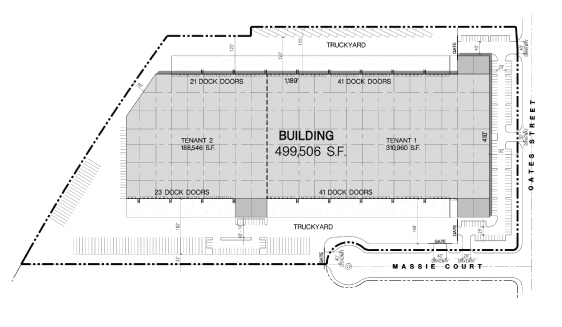Tenants have underappreciated power especially in cases of new development and investment projects. Most tenants don’t realize their own worth because they are rarely in the market, don’t experience the development cycle and are oriented towards functionality. Conversely, lease terms and tenant credit are essential to the developer. The capital impact of the lease is well understood by the developer but is often neglected by the tenant.
Standard procedure for tenants is to get a list of properties, narrow the possibilities, and negotiate for the best serving building. The tenant rarely considers what affect their lease will have on the overall financing and eventual sale. In cases of pre-leasing, early-stage financing or build-to-suit, a tenant commitment is critical for the project moving forward.
Something as simple as a penny increase in rent, an extra year in duration, or a credit enhancement from a parent company can be substantial to the value of the property and profit to the developer. The tenant is the primary component in a greater investment strategy and the leasehold is what enables the building to be transferred or financed.
The important financial parts of the deal are debt, equity, and income. Without income, the other two parts cannot survive. This relationship is obvious when income is required by the lender before they will advance any loans. There will be no investment until a long term credit tenant is obtained. During this interim period, the tenant’s power is at its peak. While lease terms are being negotiated, the owner’s focus is on value – something more tenants need to consider.

Many tenant rep brokers are driven by rental concessions. They miss the value impact over the entire development/investment life cycle. Grinding for the best lease deal is very appropriate at times, but not at the expense of realizing a significant capital event when the development is funded. For instance, there are many examples of large tenants allying with developers to build projects around the country. This symbiotic landlord/tenant relationship is financially meaningful to both sides. Many national developers have a platform to encourage this type of partnership.
The financial calculus can be complicated. The nexus of tenant contribution, a few basis point difference of cap rate, and the value to the ultimate investor is easily overlooked. Not only do these calculations vary over time, market conditions, and geography, but very few professionals have the expertise or capabilities to model them accurately. In other cases no advanced analysis is required. The tenant and developer strike a simple bargain to bring in a new building at market rent and any profit is split according to a formula.
There is an overemphasis on computerized lists. When there is a tenant requirement, the first step is to go to the Multiples, pull down the list, search for the best building and negotiate the deal. Not as much thought goes into making the whole deal for land, tenant, capital, and investor. If you’re a tenant, there’s no reason to reject the customary tools, but you may be surprised with the results by exercising your tenant power in the right situations.
Of course, there are many limitations to exercising this power. It’s not practical when the building is owned long term with no debt. Or if the developer already has a substantial financial partner with a working investment plan. However, if the developer doesn’t have a fixed game plan; their debt and equity mix is still in flux, a major lease commitment is required to make the deal happen. This event is common in build-to-suit and redevelopment projects. Moreover, in times of business recovery, there are more opportunities because companies are apt to spend capital on new projects and expansion. With new development comes the opportunity to weigh in with some of that tenant power.
